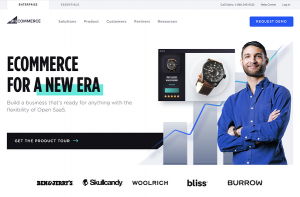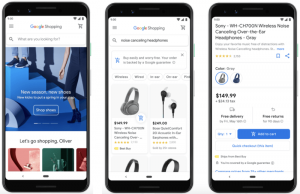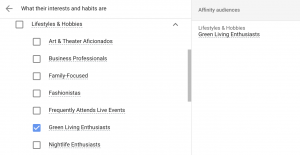As we all experience every day, emails, particularly those viewed on a ‘phone – which is most of them – get read or not based on two things: brand affinity and the engagement factor.
And whilst many of us are loyal to the brands we like, most emails are only read and then acted upon if they contain a clear message, easy to read copy, strong call-to-action, are succinct and use eye-catching and original imagery.
But this is just the start. Our use of online, interactions with brands, exposure to thousands of marketing message across multiple channels and devices, increasingly short attention spans and reduced tolerance for generic old fashioned methods of selling products and services means even the most engaging email design needs to also be highly relevant and timely.
And there’s more; factor in feelings of social responsibility and a desire for corporate integrity and it’s easy for a communication style to fall out of sync with your audience.
A matter of trust
It’s quick and easy to find a review of a product, service and brand experience and Millennials in particular regard independent information from peers as important.
Millennials respond to marketing messages that are transparent, designed well and have a friendly tone. They also trust (as many of us do) unbiased reviews and ratings from trusted sources and peers.
The old school in-your-face sell and use of tired stereotypes in marketing are increasingly ignored and large organisations with ingrained thinking and a slow-to-change approach are losing out to more modern and agile brands.

And it’s not just this approach that can damage the bottom line. There is no hiding on the Internet – brands who employ workers in developing countries as cheap labour can find themselves under fire for exploitation and those who use creative accounting to reduce tax bills or found to be investing in industries like oil or military supplies. Google went from seventh to 18th in the top 20 UK brands last year and Amazon dropped out of the top 20 completely.
But you don’t have to be a major player to fall foul of what people think. Honesty, openness and integrity are appealing qualities for consumers and is easy to qualify from online news stories and consumer experience. And whilst Millennials are important – now around one third of the adult population – the rest of us ‘mature’ consumers want the same things too.
So what makes us feel good about a brand, want to interact, buy stuff and make recommendations?
The obvious and top of the list is it’s got to be a good quality product or service and this links in to feeling confident about recommending it, especially to people we know which is important to Millennials. A brand should also fit your personality, share similar interests and have an important message which is also linked with the need for brands to demonstrate social responsibility.
Millennials want a brand to make them look good, feel good, entertain them and have a social conscience. They feel responsible for the world around them and care about what’s happening around the corner and beyond – and so should brands. Brands that market with a strong, positive message and display a sense of social responsibility show that they care about the same things Millennials do.

So, what does this mean for your email marketing and what should it look like?
Always on and always on mobile
Most of us sleep with our smartphones by our beds and not just because it’s our default alarm clock. We check our ‘phones last thing at night and first thing in the morning. We’re tied to our mobile devices, checking them constantly. The basic minimum is for emails to be mobile friendly with links that are easy to click. But just adding @media tags to make your desktop design email fit on a small screen isn’t enough, you need engaging content, eye-catching and unique imagery, a clear and concise message and an obvious call to action.
 Continuity
Continuity
Mobile emails need to go to landing pages that are also mobile friendly – your website needs to look good and work well on a small screen or people will bounce off your site and look elsewhere.
I am not a number
Millennials in particular don’t want to receive the same email as everybody else. They want to be unique and want this to be reflected in how they consume media. Emails need to come across as being as individual as Millennials are so look at segmenting them in your data and target them with relevant content. This is, of course, something you should be doing for all customer segments!
Keep talking
Millennials are a generation raised on fast-moving media. What us oldies have had to get used to is second nature for them. A 140 character mindset means content should be clever, clear and have a friendly tone – but that doesn’t have to mean less content or frequency. Instead, try breaking up the content and sending emails more often; it makes them easier to digest and keeps you in front of people.
Let me entertain you
However, doing this doesn’t guarantee engagement, what you say needs to be interesting. How many times have you read and then shared an interesting story, picture or video?
Peer pressure
Millennials don’t care much for what brands say about themselves, they care about what others say about them. Don’t be scared to offer easy ways for them to review you and to find reviews about your brand or product. Use emails to actively solicit feedback.
Care in the community
Some big brands that haven’t always had the best history are using digital to build solid relationships with consumers – Nike, Coca-Cola, even McDonalds are making headway by linking people together and with their brands through real-world events, apps with great functionality as well as head-on replies on social media.

Spread your wings
Like pretty much all of us, Millennials prefer email as method for marketing but they spend most of their online time on social networks and messaging platforms, so create an integrated marketing experience to it make it seamless.
Ripple effect
Of course, you don’t have to be a Millennial to both appreciate and want these things too. There’s an argument to say us ‘traditionalists’ just got used to how things were, that brands using patronising stereotypes and uninspiring content is just how it was (and still is for some brands – just watch daytime TV when you’re off work ill!) But digital is changing all that and so are the smarter more nimble brands.
So get with the program and get closer to your customers.
Digital & Social Articles on Business 2 Community(83)
Report Post






